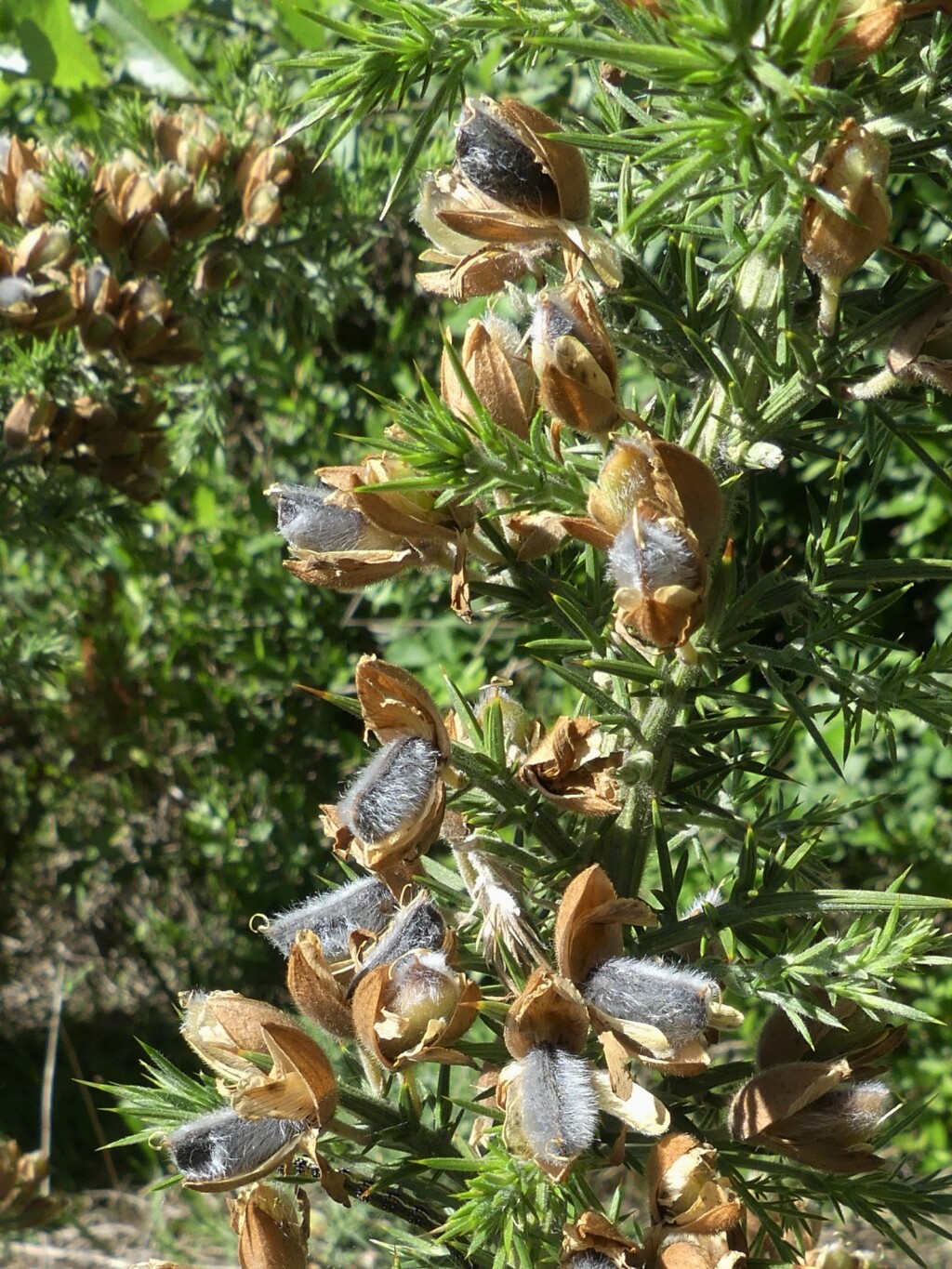Ulex europaeus
L. GorseErect or ascending shrub to c. 3 m tall; stems striate, well-branched, spinescent, densely hairy with long and short spreading hairs, glaucous when young. Phyllodes linear, 8–35 mm long, to c. 1.5 mm wide, spiny, grooved lengthwise, glabrous to pubescent. Flowers axillary, usually solitary, clustered towards ends of branches; pedicels 5–7 mm long, villous; bracts ovate-acute, c. 2 mm long, hairy, yellow, persistent; bracteoles ovate, c. 3 mm long, 2–4 mm wide, hairy, attached at base of calyx. Calyx 12–20 mm long, yellow, hairy; corolla 15–20 mm long. Pod oblong, 10–20 mm long, c. 6 mm wide, somewhat compressed, densely villous; seeds 2–6, cordate, 3–4 mm long, brown, shiny; aril white. Flowers mainly Aug.–Oct., Mar.–May.
MuM, Wim, GleP, Brid, VVP, VRiv, MuF, GipP, OtP, WaP, Gold, CVU, GGr, DunT, NIS, EGL, EGU, HSF, HNF, OtR, Strz, MonT, VAlp. Also naturalised WA, SA, Qld, NSW, Tas. Native to western Europe. A garden or hedge plant that has become widely established in higher rainfall parts of the State. Declared a noxious weed in Victoria.
Jeanes, J.A. (1996). Fabaceae. In: Walsh, N.G.; Entwisle, T.J., Flora of Victoria Vol. 3, Dicotyledons Winteraceae to Myrtaceae, pp. 663–829. Inkata Press, Melbourne.
 Spinning
Spinning



